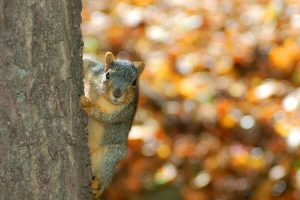By: Logan Dudley, Bicentennial Intern, Class of 2019, Communication and Culture, Bloomington
As a member of the “History Beyond the Bypass” team, I have spent the semester researching the history of the University’s buildings and grounds. Prior to this, I had never used historical archives to conduct research. Locating the proper resources that actually offer usable information has probably been the biggest challenge I have faced as an intern.
Because of the nature of our project, many of the documents and resources we rely on are not immediately accessible.
I set up an appointment with Kristen Leaman early on in my research to ask for her help in finding information on spaces like University Lake, the coal ash pile, the sweetheart tree, and the old shooting range. Of these, only the sweetheart tree was included in a reference file in the archives.

It is the nature of these spaces that they are typically neglected, as we emphasize in our project, both in terms of their physical presence, but also in terms of their documentation.
That said, our team was fortunate enough to have Michael Chitwood, Building Manager of the Research and Teaching Preserve, as our external mentor. He and others before him had gathered and saved a plethora of documents on these spaces that highlight the tensions between the university as an institution and the natural environment it has made its home.
(Excitingly, many of these documents will eventually be given to the archives to aid future students like my fellow interns and me!) For instance, there are newspaper clippings and environmental reports on these spaces that clearly indicate that IU took part (and in some cases, still takes part) in practices that are not environmentally friendly.
The coal ash pile, for example, even prior to it use as a dumping ground for the coal ash that was produced by burning coal to fuel the university, was supposedly used by the university for dumping waste of all kinds. According to members of the Old Sycamore Valley Gun Club who frequented the old rifle range located in the same area, they would find chemical vials from IU labs dumped there and would set them up to use as targets.
Clearly, IU has come a long way in its methods of waste disposal, because, currently, waste is not being dumped on the land and the flora and fauna in the area are healthy and thriving.
In addition to resource documents, I have also needed to interview people directly to gather information. Collecting their contributions has been the most rewarding aspect of my research journey, but it has also been the slowest. One of the most practical things I have learned during my time as an intern is that working with people necessarily takes longer than expected and that anyone who works for the university automatically has a busy schedule. It took me two full weeks to find a time to meet with Mike Girvin, IU Manager of Landscape Services.
Finally, I am now in the process of grappling with the technology. Since I am not very tech savvy, understanding and using StoryMap to create the kind of complex final product that we are aiming for will be challenging. Fortunately, since we work in teams under mentors, I will have access to all the help I need.
Despite these challenges, working on the “History Beyond the Bypass” as part of the bicentennial team has been a hugely rewarding experience. In fact, developing an awareness of the less flattering aspects of how the University has maintained itself and its landscape throughout its history has only deepened my appreciation of it.
Prior to my work for the bicentennial, I was only familiar with the romanticized notion that IU cherishes its woodland spaces, and through my work, I have discovered that this mythologizing about the Woodland Campus’s identity stems from a lot of truth—but it does not do justice to the long history of negotiation between IU’s people and organizations and the land that they have adopted and shaped for their own use.

And though the university is doing all it can currently to expand and strengthen the community of trees on campus, at one point, students and faculty gathered together to clear an entire orchard in preparation for the construction of the men’s gymnasium, now part of the HPER complex now known as the School of Public Health. President William Lowe Bryan and even his wife, Charlotte, yielded axes to take part in the event!
So, even though IU’s Culture of Care extends to its natural spaces, there have inevitably been periods when these same spaces have been neglected or sacrificed, either for lack of knowledge or even for the greater good of the university.
But as time has gone on, Indiana University has learned of the ill effects of disregarding the environment for any reason, and as we continue to learn and share through projects like this one, hopefully, the quality of our care for these spaces will continue to improve.
P.S. Fun Fact: According to Mike Girvin, our beloved IU squirrels do more damage by burrowing into the trees on campus than anything we humans do!

Your articles are very interesting. My great grandfather and his brother-in-law helped build IU as stone masons. Congrats on 200 years.